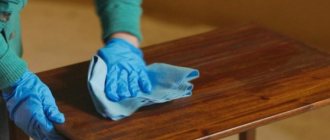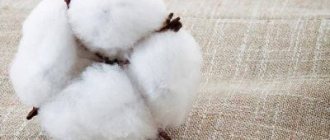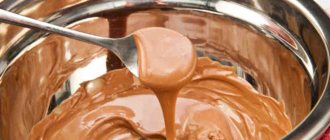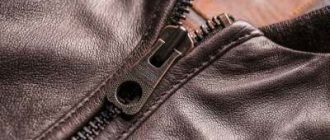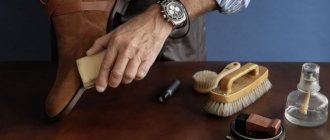Furniture made from eco-leather has excellent characteristics and costs much less than a similar option made from genuine leather.
During operation, abrasions, cracks, stains and snags may occur, which sooner or later will lead to the formation of bald spots and holes requiring expensive repairs.
If you think the only way to prevent this is to use protective covers. Then what is the point of spending money on such furniture, the beauty of which will always be hidden under the mask of bedspreads?
There are other ways to care for eco-leather furniture that will preserve its original appearance after many years of daily use.
A few important rules
Before buying eco-leather furniture, first of all think about practicality. The purchase will not be beneficial if:
- There are animals in the house that like to sharpen their claws on the end of the wooden frame.
- There are small children who love to draw with felt-tip pens.
- There is a lot of traffic in the room during the day.
All this will lead to the fact that the furniture will be constantly exposed to negative influences and will quickly lose its attractive appearance. Therefore, if you have a sofa or chairs made of this material in your home, remember a few important rules:
- Any dirt must be removed immediately using a soft damp cloth or rag - eco-leather is difficult to clean from old dirt, as the surface can easily be damaged, leaving scratches.
- Furniture needs daily preventive cleaning - small debris accumulates in the joints and depressions, which will stick to clothes in a couple of days.
- If the stain is old and dried, then you need to apply a damp soft cloth to it for 2-3 hours, waiting until it softens and moves away from the surface on its own without applying force.
- It is better to install eco-leather furniture away from radiators and radiators, since they dry out the air, which will cause cracking of the coating if it is not treated with special moisturizing mixtures.
- If there are animals in the house, then they should be weaned from sharpening their claws on the sofa. There are special products that emit an unpleasant odor, scaring the animal away from the furniture.
- Before using a cleaning product, be sure to check whether it is suitable for eco-leather. Typically, the furniture manufacturer gives recommendations regarding care, indicating specific brands of detergents and cleaning products.
By following these rules, eco-leather furniture will last for many years, and it will look the same as after purchase.
Conclusion
Twenty years ago, such a question “How to clean a leatherette jacket” would not even have arisen, since the quality of this material left much to be desired, and cleaning or washing leatherette would have been the last operation for things made from it.
Today, most eco-leather options are high-quality material, which is characterized by increased wear resistance, is quite durable and provides ample opportunities for fashion designers and clothing designers. Today, not only raincoats and skirts are made from leatherette, but also skirts, trousers, dresses, vests and other wardrobe items.
Over time, even with the most careful wear, any item will need cleaning or washing. Even from eco-leather.
How not to clean?
It’s paradoxical, but even the highest quality material can be ruined due to ignorance. To prevent this from happening, pay attention to the following points:
- Do not use hard brushes to remove difficult stains. Abrasives will scratch the surface, which will later create a hole.
- Avoid using gasoline, solvents and other aggressive compounds that can leave burn marks.
- Do not use hot air from a hair dryer for drying. It deforms eco-leather and makes it vulnerable at the slightest tension.
- Coarse cleaning powders, as well as salt and soda, scratch it upon contact with the surface, so you should also avoid using them in cleaning.
- It is strictly forbidden to use bleach and other chlorine-containing products, as they destroy the structure of eco-leather and bleach the color. In addition, the material is capable of accumulating an unpleasant and pungent odor that lasts for several days.
- Acetone and products containing it cannot be used to remove any types of stains.
Some “traditional craftsmen” advise using alcohol if there are persistent stains. This should not be done, since alcohol in its pure form can leave a burn at the site of application, which will soon cause the formation of cracks and holes.
What types of leatherette are there?
Before you start cleaning, it is important to decide what type of leatherette your upholstery is:
- vinyl artificial leather - can be cleaned with almost any means that does not contain solvents;
- Apatek is a rather capricious material, cleaning should be careful and gentle;
- eco-leather - provides a special choice of products and strong moisturizing is not allowed.
In general, any type of leatherette requires special attention and will not tolerate aggressive cleaning. When cleaning it is prohibited:
- heavily moisturize the upholstery;
- use too hot water and dry with heating devices (hair dryer, iron);
- clean with a steam cleaner;
- use abrasive (powder) products and rough, hard brushes.
Also, when cleaning leatherette chairs, you need to be especially careful when using products containing solvents, chlorine, acetone, and acids. Before applying any such composition, it must be tested on an inconspicuous area of the upholstery to avoid negative consequences.
Daily care
It is recommended to clean furniture once a day. No special detergents are needed for this.
You can do this in two ways:
- Dry cleaning with a sofa vacuum cleaner - be sure to use a soft attachment on the vacuum cleaner that will not scratch the surface. Cleaning will help remove all the dust and dirt, as well as crumbs and small dirt.
- Wet cleaning - a soft rag is moistened in warm water, completely wrung out and passed over the surface of the furniture. First, dirt is removed from the folds, after which the entire surface is wiped.
There is no need to apply any products, nor do you need to dry it. The furniture will dry on its own in 1 hour.
There are special microfiber cloths that have long pile and remove dirt well without having a negative impact on eco-leather.
Sofa
Any house or apartment has a soft, cozy sofa that is the central element of the guest area. Its upholstery often gets dirty and requires urgent, effective cleaning.
Naturally, it is impossible to take such large furniture to the dry cleaner every time. That’s why it’s so important to be able to remove a variety of contaminants yourself.
In this article we will talk about folk and industrial means with which you can get rid of all kinds of stains on the upholstery of a sofa in your home, without dry cleaning.
Fighting stains
No matter how carefully you care for your furniture, stains will appear sooner or later.
Greasy and corrosive, they spoil the appearance of any, even the most expensive furniture, and the removal of each of them has its own characteristics.
Oily stains
The faster the fat is removed from the surface of the eco-leather sofa, the easier it will be to remove the stain.
The sequence of actions is as follows:
- Quickly remove excess grease with a dry cloth without pressing on its surface, as the stain will penetrate deeper into the coating faster. Change the napkins until they no longer absorb grease particles.
- Take a drop of dish detergent, apply evenly to the stain, and leave for 3-4 minutes.
- Use a damp soft cloth to remove any remaining detergent in a circular motion.
- Let it dry.
If you are unable to remove the stain the first time, you can try this method several more times. The contamination will become noticeably lighter, after which it will be completely unnoticeable.
In the event that a greasy stain was created a long time ago, but was not noticed immediately, the following improvised means will help:
- Ammonia and warm water - take 1 tablespoon of ammonia per glass of warm water, dilute it, blot a rag and apply it to the stain. Press down lightly and hold for 3-5 minutes.
- Hydrogen peroxide – take a cotton pad, soak it well in peroxide and place it on the stain. Cover with a rag and place a light weight (book, overturned chair). After 5 minutes, remove the cotton pad and let the stain dry.
- Shaving foam - apply a thick layer of foam, leave for 5 minutes, then remove any remaining residue. There is no need to wash it off.
If all this does not give the desired result, then you can buy a special stain remover for eco-leather furniture. The instructions will indicate how and in what cases to use it.
Contamination from markers and pens
Traces from a ballpoint pen are among the most difficult types of stains to remove, which hopelessly stain eco-leather furniture. It is not always possible to completely remove contamination, and old stains will remain in place forever.
If this type of contamination occurs, you can try the following methods:
- Hair fixing varnish - spray varnish onto the ink stain, wait 2-3 minutes, remove the residue with a cotton pad. Repeat until all dirt is gone.
- Slaked soda works well with markers and felt-tip pens. Extinguish a tablespoon of baking soda with a tablespoon of apple cider vinegar, apply the paste to the stain, and after a minute wipe off the residue.
- Nail polish remover - lightly wet a cotton pad and clean it with gentle, gentle movements in the direction of the stain.
- Glass cleaner - apply to the stain, let sit for 5 minutes, then use gentle blotting movements to remove any remaining dirt.
The faster the action was taken, the greater the chance of completely getting rid of the ink and felt-tip pen stain.
Wine and juice stains
If an alcoholic drink, juice or compote gets on the surface of light-colored furniture, there is every chance that a colored stain will remain. It’s not easy to fight it, but you can try the following methods:
- Liquid soap and citric acid - dissolve ¼ teaspoon of citric acid in 50 ml of water, add a tablespoon of any liquid soap. Apply the resulting mixture to the stain and gently wipe it off with gentle movements.
- Dishwashing detergent and ammonia - take 1 drop of ammonia for 1 tablespoon of dishwashing detergent, apply to the stain, let stand for 10 minutes, then remove the excess.
Spilled drinks must be removed from the surface as quickly as possible before they are absorbed by the coating. The older and deeper the stain, the more difficult it is to deal with.
How to care for products made from eco-leather or leatherette
Impregnation for leather products will help prevent many stains.
It is not always possible to prevent and minimize contamination, but good care will help keep the purchased model looking beautiful longer.
Basic rules of care:
- Regular cleaning should be carried out with a slightly damp sponge or cloth made of soft materials: microfiber, cotton, calico or flannel.
- Use a vacuum cleaner only with a special attachment for furniture.
- Do not place eco-leather items near heating elements or under direct sunlight.
- Twice a year, use special protective creams and sprays for the care of leather products to treat upholstery.
Inevitable dirt on the surface of a white leather sofa stands out especially clearly, so the process of caring for leatherette or eco-leather should be studied before purchasing. Even better is to purchase quality cleansing products in advance.
If stains and traces of use appear on the surface, use only preparations and methods recommended by the sofa manufacturer. You also need to study the symbols on the label for the furniture upholstery - it indicates how to properly clean and dry it.
Disinfection
Any surfaces in the house need periodic disinfection, which will help reduce the concentration of pathogenic microorganisms. And the eco-leather sofa is no exception. The following means can be used for this purpose.
| Name | Frequency | Sequencing |
| Baby liquid soap | 1 time per month | Dissolve a teaspoon of soap in a glass of warm water until it foams. Moisten a soft cloth in soapy water, twist it well and walk over the entire surface. The cloth should be rinsed periodically in soapy water. |
| Water with lemon juice | Once every 2-3 months | For 1 liter of warm water you need to take 3 tablespoons of lemon juice. First, you should treat the armrests and headrests where there are visible areas of grease. Next, use a damp cloth to go over the remaining areas. |
| Water with ammonia | Once every 6 months as a preventive measure | You need to dissolve 4 tablespoons of ammonia in 1 liter of warm water, moisten a soft rag and walk over the entire sofa. If there are stains, you can linger on them and treat them several times |
| Special antibacterial wipes for leather furniture | Daily or as needed | Take the napkin out of the pack, unfold it and apply it to the recommended area. If there is a lot of furniture, then you need to use more than one napkin, but change them as they become dirty. |
Disinfection should be carried out as soon as it gets dirty. If the furniture is rarely used, then once a month is enough. With high traffic, treatment is needed daily.
What is leatherette?
Leatherette is artificial leather, a high-quality polymer material that imitates natural leather. The material is quite durable and easy to handle, but, unfortunately, the surface of leatherette can be damaged by anything, for example: direct sunlight, exposure to high temperatures, household pollution.
If a leatherette sofa is light in color, it will always be stained by clothes, jeans, and bed linen. How to avoid this? You will learn all the answers to this and other questions about cleaning leatherette from this article. Below we will describe in detail methods and tips that will certainly help you in caring for this material.
The best care products
Manufacturers of high-quality eco-leather furniture insist that owners use only specially developed products that do not harm the coating, remove dirt well and protect the surface from cracking. The best of them are the following:
- Eco mist is a spray that does not require rinsing. It removes dirt well, is non-toxic, completely safe for children and pets. Gives furniture shine and gloss. Does not contain fragrances and is safe for allergy sufferers and asthmatics.
- Glutoclean – removes dirt and debris well and has an antistatic effect. Does not cause allergic reactions, protects leatherette from the negative effects of ultraviolet radiation and dry air.
- Unicum – gently cleanses and nourishes eco-leather, gives a beautiful, moderate shine. Does not require rinsing or wearing gloves.
Before using products, make sure that they are specifically approved for use on non-natural leather surfaces. Read the instructions first, as each of them has its own method of application, and some need to be rinsed off.
How to clean eco-leather in a car interior: general rules for self-cleaning
Do-it-yourself cleaning is a simple and non-hazardous action for upholstery if you follow certain rules:
- Before cleaning, place the car in the shade so that the seats do not heat up from the sun - otherwise the cleaning compounds will evaporate before they have time to work.
- Before cleaning, vacuum using an attachment with a soft brush: remove dust and sweep out any stuck large debris.
- We wipe away dirt with a sponge made of foamed polymer plastic (melamine), calico or flannel cloth, microfiber, cotton pad or swab. If it is necessary to eliminate traces of dyes, we start from the edges of the stain and end with the center, changing the cotton wool “tools” that get dirty so as not to smear the dye more. We do not use hard sponges and brushes, pumice stones: they will damage the PVC coating, littering it with microcracks and scratches.
- Cleaning products are gentle: soap solution (we use laundry soap), hydrogen peroxide, alcohol solutions with a low alcohol concentration (from 20% to 40%). We do not use aggressive chemicals, perfumes, abrasives or chlorine-containing compounds.
- We do not wash covers - neither by hand nor in a machine. If they dry out, they “sit down,” but the seats are not people, they won’t be able to move to stretch the shrunk “clothes.”
- Do not “fill” the covers with moisture, wipe quickly and as thoroughly as possible.
- For drying - room temperature. No hot sun rays. Hairdryer, radiator and heater are prohibited!
Sometimes the use of these products is not effective, and you have to use more aggressive ones (toothpaste, perfume alcohol solution 70%, ammonia, nail polish remover). The use of these substances is an extreme measure; they can harm eco-leather covers!
Cleaning dry stains from eco-leather
We carefully wash off the dried stains with a damp, soapy sponge, then rinse off the soap and quickly remove any remaining moisture. You can use not a soap solution, but an alcohol-water solution of 40% (this is ordinary vodka).
Let's look at the main types of stains on car seat covers:
Grass and berry stains
During the summer season, green traces from grass juice or multi-colored traces from berry juice appear on the covers. You can remove them using citrus juice or citric acid. You can bleach the surface (if you need to clean white eco-leather) using hydrogen peroxide.
Food contamination
Consuming food and drinks in the car is not the best option, but often there is no other opportunity to eat on the road (or feed the children). If the upholstery has been damaged by food or drink:
- Immediately blot tea and coffee with paper napkins or a dry cloth (option: pour salt onto the contaminated area and collect it, which has absorbed most of the liquid);
- “consequences” of spilled sparkling water, compote, beer are wiped using hydrogen peroxide, citric acid, and then a soap solution;
- We remove oil marks from fatty foods, honey, and chocolate using laundry soap or dishwashing liquid. You can use distilled white vinegar (not wine vinegar!). It removes various contaminants, and it also succeeds in removing oily products. The trick is to apply the vinegar and then wipe it off in time. Let the vinegar sit on the dirty area for a minute or two and blot with a clean white cloth. Continue adding more vinegar and wipe with a clean cloth. Vinegar not only cleans, but also deodorizes and neutralizes odors.
General tips and tricks
Caring for eco-leather furniture, although not easy, is worth it. The coating will have an attractive appearance that cannot be distinguished from real leather.
Follow these guidelines:
- Do not cut off the dirt with a sharp object - this may lead to the formation of a hole.
- Aggressive chemicals, even in small quantities, are prohibited.
- It is better not to use a hairdryer and ice cubes - temperature changes will lead to damage to the integrity of the canvas.
- If a stain appears, you need to remove it as quickly as possible before it gets stuck.
Expert opinion
Kokovin Dmitry Vasilievich
Furniture restorer
Furniture made from eco-leather in light colors is more whimsical, since over time it can darken and fade, and any dirt is clearly visible. Think before you make a purchase and evaluate its feasibility specifically for your home.
How can you quickly and efficiently remove a stain on leatherette?
Things made of leatherette will look like new for a long time if you provide them with high-quality and regular care. In addition, every housewife should know how to remove streaks and stains from a rather capricious surface.
Many women face difficulties in this area, because persistent formations are not so easy to remove using gentle means, and aggressive substances negatively affect the quality of the material. In fact, everything is not so hopeless. You just need to know which products work best with which type of stains, and which reagents are best to avoid altogether.
How to clean chair upholstery depending on the material
You must first correctly determine what the upholstery and frame of the chair consists of. Otherwise, it will not be possible to choose the appropriate method of work, since all materials have their own performance qualities and certain nuances. For example, a method suitable for tapestry fabric may cause damage to a velvet seat, etc.
Experts emphasize that it is better to play it safe and cover the chair frame and the floor covering underneath while cleaning, because just one drop of cleaner can ruin the surface. Therefore, prepare in advance:
Next, we will consider which cleaning products can be used for specific materials.
A material such as flock is practical and convenient during use. The following will help you clean fabric effectively:
IMPORTANT! It is forbidden to scrape dried stains from this fabric, and the use of harsh chemicals is also not recommended.
Jacquard
Jacquard is characterized by the fact that it does not fade in the sun for a long time, retains the brightness of colors and is resistant to sudden temperature changes. During cleaning, adhere to the following algorithm of actions:
REFERENCE! This method is applicable to almost all upholstery materials, with a few exceptions.
Velours
As for velor, aggressive chemicals and scraping dirt from the chair seat are also not allowed here - such manipulations can easily damage the delicate surface. Also, if the furniture is upholstered in velor or velvet fabric, using a vacuum cleaner is not recommended.
The most incredible way to get my hair back!
This is just a DISASTER ! And after all, my hair did not start falling out in one day, but systematically - day after day I watched how the hair left my head: while combing, washing, even while sleeping. (read more…)
Microfiber
It is contraindicated to clean surfaces made of this material with hard brushes. This creates pellets, the removal of which often leads to the appearance of holes. It is recommended to clean the upholstery with a sponge and warm water and soap. A vinegar solution is also used to remove stains.
REFERENCE! A clothes steamer can help remove wrinkles and creases from the surface of your microfiber chair.
Delicate silk material requires special care. Treat contaminated areas with a soft sponge with a weak solution of vinegar (use 1 tablespoon per 1 liter of water). Soap should be used only as a last resort, since the use of alkaline and any aggressive cleaning agents is contraindicated for silk fabric.
IMPORTANT! Strong rubbing, steaming and hot drying can damage silk upholstery.
Natural and artificial leather
Products made from natural or artificial leather require delicate handling. Typically, owners give preference to special gentle products designed for skin care. It is important to take into account some nuances:

